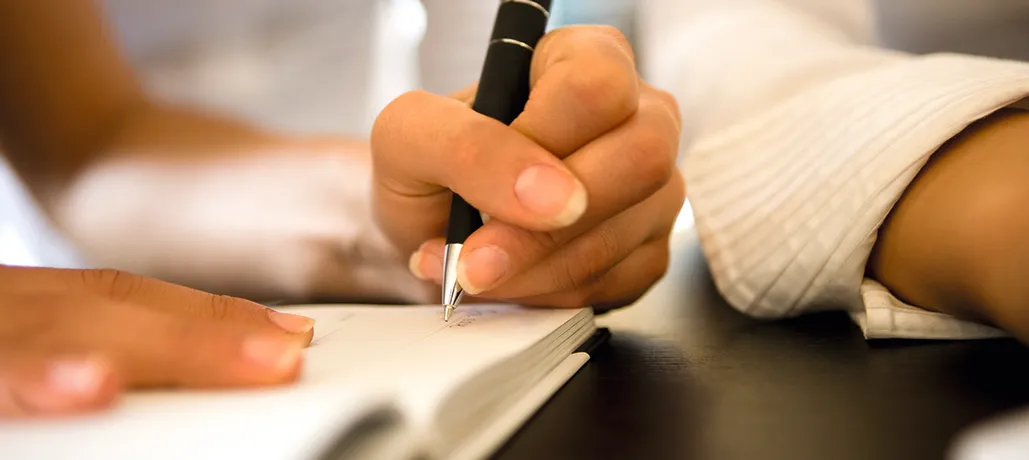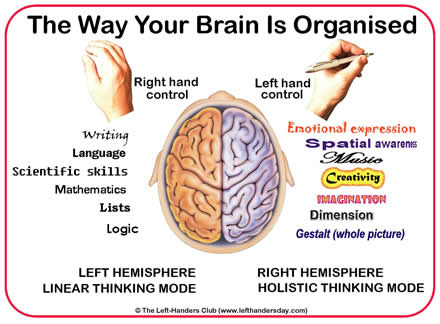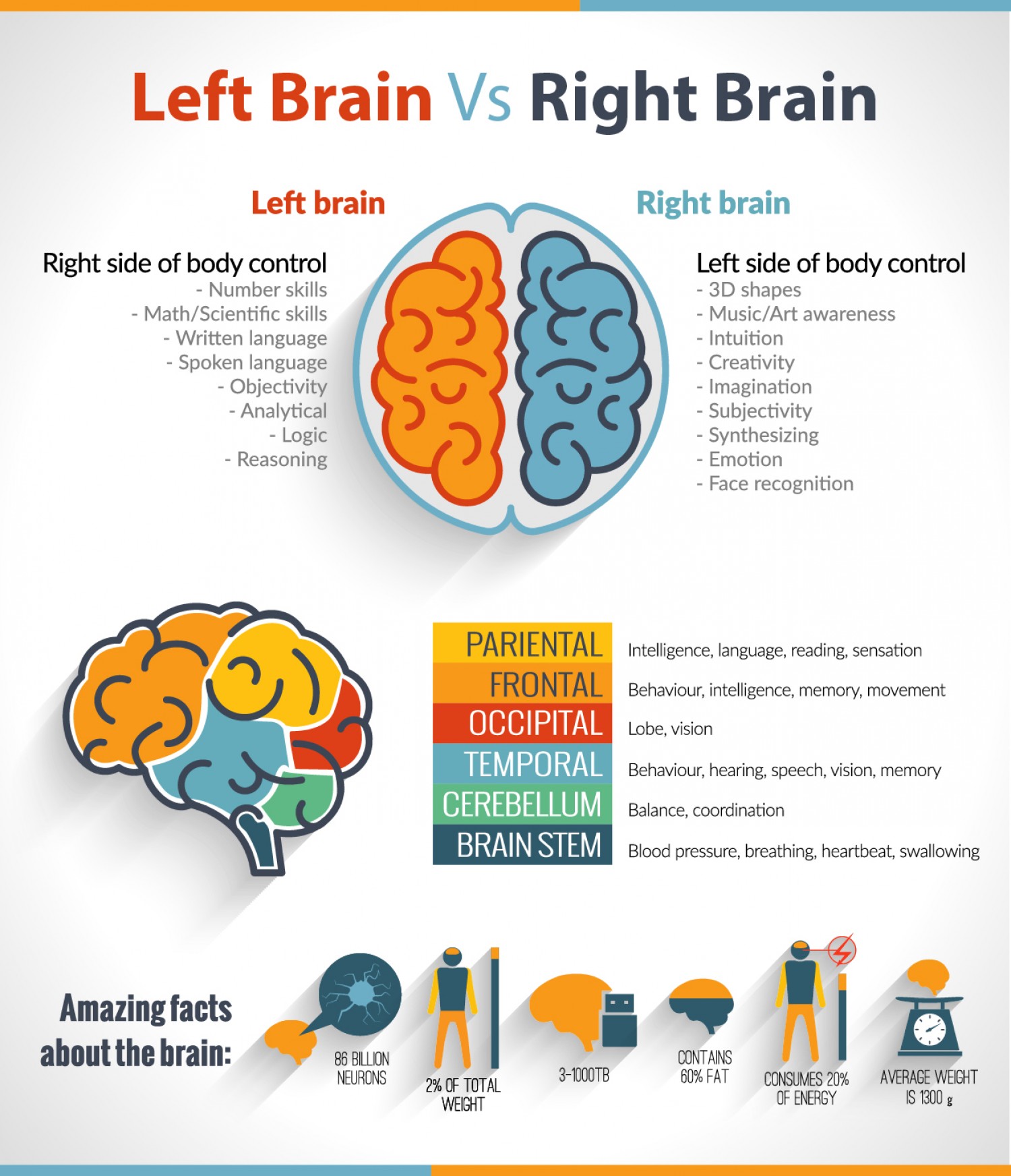Beyond Right; The Intriguing Reality of Left-Handed Individuals
In a world seemingly designed for the right-handed majority, the left-handed minority often finds themselves navigating a unique path, where everyday tasks can pose unexpected challenges and hidden talents await discovery. This article delves into the captivating realm of left-handedness, unraveling the sets of individuals who defy the norm and thrive in a world tilted towards the right.
The Mystery of Left-Handedness
 The origins of left-handedness remain shrouded in mystery, with scientists and historians alike seeking to unravel its enigmatic roots. While genetics likely play a significant role, environmental factors and prenatal development may also contribute to handedness. Studies have shown that left-handedness tends to run in families, suggesting a hereditary component, yet the precise genetic mechanisms remain elusive.
The origins of left-handedness remain shrouded in mystery, with scientists and historians alike seeking to unravel its enigmatic roots. While genetics likely play a significant role, environmental factors and prenatal development may also contribute to handedness. Studies have shown that left-handedness tends to run in families, suggesting a hereditary component, yet the precise genetic mechanisms remain elusive.
Though in some history, left-handedness has been imbued with a range of myths, superstitions, and cultural taboos. In many ancient societies, left-handedness was viewed as a sign of malevolence or deviation from the natural order, leading to stigmatization and discrimination. Even today, remnants of these beliefs persist in certain cultures, where left-handedness is still considered unlucky or taboo.
Lefties in the Right-Hand World
Imagine a left-handed child sitting in a classroom, eagerly grasping a pencil to begin their assignment. As they start to write, they find themselves contending with smudged ink, awkward hand positions, and discomfort. Why? Because the writing implements they're using are optimized for right-handed users. From the orientation of the nib to the placement of the grip, everything feels slightly off for the left-handed child.
Computer mice, designed with right-handed ergonomics in mind, can cause discomfort and strain for left-handed users who must navigate menus and interfaces with their non-dominant hand. Beyond the classroom, left-handed individuals encounter a myriad of challenges in everyday life. From kitchen utensils to power tools, the majority of consumer products are engineered with right-handed users in mind, leaving left-handers to adapt or seek out specialized alternatives. Cooking becomes an exercise in dexterity as left-handed chefs grapple with right-handed can openers, peeling knives, and measuring cups. DIY enthusiasts face similar hurdles as they attempt to wield right-handed saws, drills, and screwdrivers with finesse.
Beyond the classroom, left-handed individuals encounter a myriad of challenges in everyday life. From kitchen utensils to power tools, the majority of consumer products are engineered with right-handed users in mind, leaving left-handers to adapt or seek out specialized alternatives. Cooking becomes an exercise in dexterity as left-handed chefs grapple with right-handed can openers, peeling knives, and measuring cups. DIY enthusiasts face similar hurdles as they attempt to wield right-handed saws, drills, and screwdrivers with finesse.
Even something as seemingly innocuous as shaking hands can pose a dilemma for left-handed individuals. In many cultures, the customary greeting involves extending the right hand, leaving left-handers to navigate awkward exchanges or risk appearing impolite by offering their left hand instead. Such social nuances underscore the subtle ways in which right-handedness permeates everyday interactions and expectations.
Beyond the practical challenges, left-handed individuals may also contend with psychological and emotional ramifications of living in a right-handed world. Constantly adapting to a world that doesn't cater to their needs can foster feelings of frustration, alienation, or even self-doubt. From childhood teasing to well-intentioned but misguided remarks from peers and adults, left-handed individuals may internalize a sense of otherness or inadequacy.
Moreover, pervasive societal attitudes that valorize right-handedness as the norm can contribute to a sense of marginalization or invisibility for left-handed individuals. In media and popular culture, left-handed characters are often portrayed as quirky or eccentric, reinforcing stereotypes and perpetuating misconceptions about left-handedness.
The Left-Handed Advantage
Despite the challenges they may face, left-handed individuals possess a unique set of advantages that set them apart in various domains. In sports such as tennis, boxing, and baseball, left-handed athletes often enjoy a strategic edge over their right-handed counterparts, as opponents struggle to anticipate their moves. Similarly, in competitive environments where creativity and lateral thinking are prized, left-handed individuals often excel, leveraging their unique perspective to innovate and problem-solve in novel ways.
Throughout history, left-handedness has been associated with creativity, genius, and innovation. From renowned artists such as Leonardo da Vinci and Michelangelo to groundbreaking thinkers like Albert Einstein and Marie Curie, left-handed individuals have made indelible contributions to art, science, and culture. Their unconventional approach to problem-solving and their ability to see the world from a different angle have propelled humanity forward and reshaped the course of history. Recent research has shed light on the neurological underpinnings of left-handedness, revealing fascinating insights into the structure and function of the left-handed brain. Studies using advanced imaging techniques have shown that left-handed individuals may exhibit differences in brain structure and connectivity compared to their right-handed counterparts, particularly in areas related to language processing and spatial awareness. These findings suggest that left-handedness is not merely a quirk of behavior but rather a fundamental aspect of brain organization.
Recent research has shed light on the neurological underpinnings of left-handedness, revealing fascinating insights into the structure and function of the left-handed brain. Studies using advanced imaging techniques have shown that left-handed individuals may exhibit differences in brain structure and connectivity compared to their right-handed counterparts, particularly in areas related to language processing and spatial awareness. These findings suggest that left-handedness is not merely a quirk of behavior but rather a fundamental aspect of brain organization.
Here are some interesting facts about left-handed people.
Population Percentage: Approximately 10% of the world's population is left-handed.
Brain Structure Differences: Studies suggest that left-handed people may have differences in brain structure compared to right-handed individuals, particularly in areas related to language processing.
Creativity: Left-handed individuals are often associated with creativity. Many famous artists, musicians, and writers are left-handed.
Sports: Left-handed athletes can have an advantage in certain sports due to their rarity, which can make it harder for opponents to predict their moves. For example, in tennis, left-handed players often have a strategic advantage.
Math and Science: While left-handedness is often associated with creativity, studies have found that left-handed individuals may also excel in math and science fields.
Ambidexterity: Some left-handed people are naturally ambidextrous, meaning they can use both hands equally well for tasks.
Left-Handedness in Twins: Left-handedness occurs more frequently in twins than in the general population. This suggests a possible genetic component to handedness.
Historical Perceptions: Throughout history, left-handedness has sometimes been associated with negative traits or superstitions. For example, in some cultures, being left-handed was considered a sign of being unlucky or even evil.
Language Processing: Studies have shown that the brains of left-handed people may process language differently, with a tendency for greater reliance on the right hemisphere of the brain for language tasks.
Higher Risk of Certain Health Conditions: Some studies suggest that left-handed individuals may have a slightly higher risk of certain health conditions, such as autoimmune diseases and mood disorders, though more research is needed to understand these associations fully.
In the end, This article is not just a story of left-handedness; it's a celebration of individuality, creativity, and the remarkable human spirit that thrives in the face of adversity. So, the next time you pick up a pen or reach for a tool, remember the captivating stories of those who dwell beyond right, and embrace the unique journey of the left-handed among us.






























